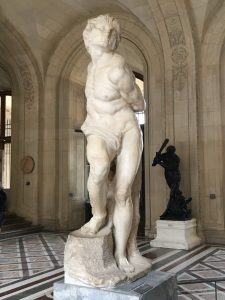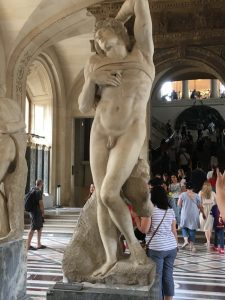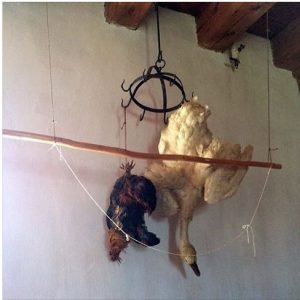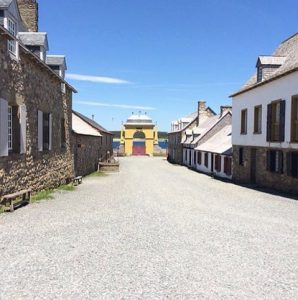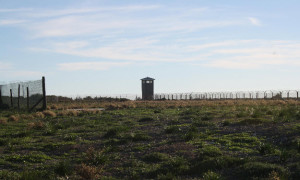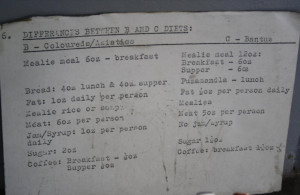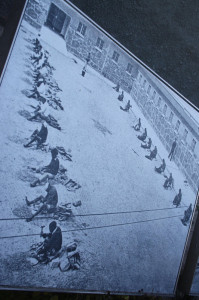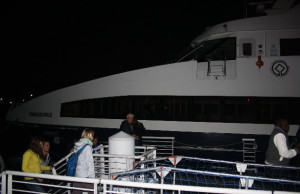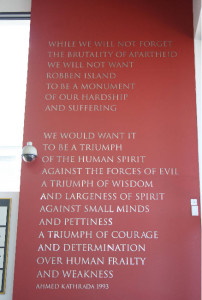Tag Archive
activity architecture art artist building Canada children city CostSaver downtown drive i-95 entertainment Europe event exhibit family festival Florida food fun historic History landmark local Museum music Nature New Zealand Ontario roadtrip sculpture Seattle show sights sightseeing tour tourist Trafalgar travel travelblogger view Washington Washington State water world
France, Paris: Michelangelo’s Slaves
.
With everyone crowding in to see the Mona Lisa, you can head elsewhere in the Louvre Museum to find 100’s of other famous artists’ works, starting with Michelangelo. He was so brilliant at coaxing human emotions out of the stone. Here are two representations of slaves so painfully showing their despair.
Canada: Choir Boy “Sings” in Montreal Before It Hits Broadway
A half century ago, a creative actor/director and immigrant (from South Africa via England), Maurice Podbrey, together with his equal half, Elsa Bolam (and Herb Auerbach and Peter Duffield) managed to knit together a theater company, Centaur, which was and is no easy feat. If that wasn’t nerve wracking enough for a person, Bolam then went on to start another successful one, Geordie Productions.
In an unintentional but perfect nod to the past, Eda Holmes, Centaur’s new artistic director, brings us Choir Boy set in a boys’ prep school while Podbrey’s first production, The Prime of Miss Jean Brody, took place in a girl’s school. The play is written by Tarell Alvin McCraney, who comes with a pretty flashy CV: he’s the Chair of Yale’s School of Drama, where he is also the Playwright in Residence at the Repertory Theatre. and he was also Playwright in Residence for Stratford-Upon-Avon’s Royal Shakespeare Company – and happens to be a member of the renowned Steppenwolf Theatre Ensemble. And let’s just throw in here that he wrote the story of Moonlight which won Oscars for best picture and for the writing.
The story is mostly about Pharus (played by Steven Charles), a gay student making his way through a very traditional private school. Charles commands the stage throughout, and we can’t wait to see where his star takes him (to the Broadway production?). His fellow students talk, yell, fight and sing a cappella as they share intimacies and rivalries when the old school values conflict with our modern world in rules, nepotism, faith, sexuality and school board traditions. Tight direction by Mike Payette keeps you riveted throughout, while Lighting Designer Andrea Lundy’s magic creatively moves you around the set (loved the purple).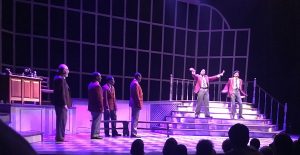
Floydd Ricketts, the musical director and arranger, was the right man in the right place to be able to create new arrangements of spirituals, gospel and jazz songs for a cappella harmonies. Ricketts notes, “Even though this music comes from pain, there is also joy in it”. Dayane Ntibarikure, assistant director and choir movement facilitator, did a brilliant job of having the actors move “slave slowly” around the scenes, adding foot stomping to song and subtly evoking a chain gang in the shower scene.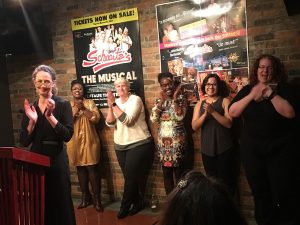
Holmes has tweaked the play runs slightly this year by adding (less expensive) preview shows to get the performance just that more perfect for opening night. You know how much I like a deal, and Centaur offers much for FREE with behind-the-scenes info to enrich your theater experience: Talk Back after the shows , Sunday Chat Up, Thursday Pre-Show Convo and the Saturday Salon.
How perfect that this golden Centaur season started by lifting our spirits with the power of music blended with this timely story. See Choir Boy in Montreal before you can’t get tickets on Broadway (Dec 2018)!
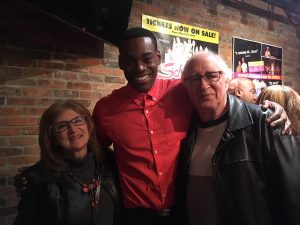
Location 453 St-Francois-Xavier
corner: Notre-Dame
Tel: 514-288-3161
Dates: til Oct 28
www.centaurtheatre.com
Metro: Place d’Armes
US: Brunswick, GA – Bring Your Appetite to Sample at the Birthplace of Brunswick Stew
Brunswick Rockin’ Stewbilee takes place annually at Mary Ross Waterfront Park, recognizing Brunswick, Georgia as the birthplace of the original Brunswick Stew. As the oft-told tale goes, a slave cook named Jimmy Matthews created the concoction in 1828. Nearly two centuries later, the original meat – squirrel – is out and, today, chicken, is in.
Each year, cooking teams from near and far compete to see who has the best stew, in a cook-off where the culinary skills and secret recipes are challenged by amateur and professional chefs, vying for the coveted Peoples’ Choice and Judges’ Award.
In addition to stew tasting there will be loads of other fun family activities. The day long event begins with the 5k Road Race followed by the Pet Supplies Plus Pooch Parade, Live Entertainment, The Kid’s Junior Stewbilee Central Fun Zone, Classic and Antique Car Show, Arts & Crafts displays and of course, sampling of the Best Brunswick Stew in the nation. 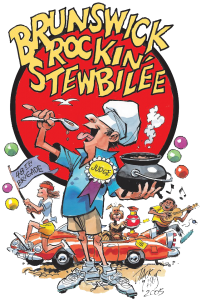
Schedule:
9am – Motor Cycle Ride
10am – Live Music – Pier Pressure
10:15am – Pooch Parade
12:15pm – Live Music – 3 Day Weekend
11am – 2pm – Brunswick Rockin’ Stew Tasting
Location: Mary Ross Waterfront Park, Bay & Gloucester Street, Brunswick, GA 31520
Date: Sat, Jan 27th, 2018
Time: 9am – 2pm
Tel: 912-996-4593
stewbilee.com
For Regional Accommodations, Restaurants & Attractions: goldenisles.com
US: Walterboro, SC – WWII African American Pilots, Coke Collection and SC Heritage at Colleton Museum & Farmer’s Market
Colleton Museum & Farmer’s Market was re-purposed from a former grocery, the Colonial Food Store, and it explores the history of Colleton and is home to thousands of objects from Colleton County and South Carolina.
The outside window offers a peek into inside exhibits, like the old time general store, the story of the Tuskegee African American WWII pilots, animals of the ACE basin, a postcard and Coca Cola collection and local silhouette artist Canew Drew’s cutouts. We marveled at the shoe-fitting Adrian X-ray fluoroscope machine which showed you, your Mom and the salesman how the bones of your feet fit into your shoes.
You can watch a video about rice plantation culture and how the black slaves brought the techniques and tools that made their masters rich. See if you can find the snake, turtle and fish painted into the floor. There’s a gift shop and a yummy cafe. The range of exhibits are free and open to the public.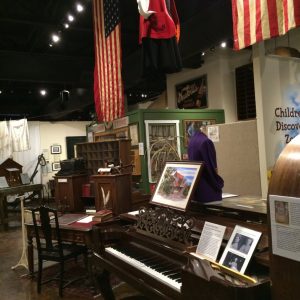
Location: 506 E. Washington St, Walterboro, SC 29488
Hours: Tues 12-6 pm, Wed-Fri 10-5 pm, Sat 10-2 pm
Tel: 843-549-2303
colletonmuseum.org
For Regional Accommodations, Restaurants & Attractions:
walterborosc.org
Canada: Cape Breton, Nova Scotia – Dinner Hanging Around
Cape Breton, Nova Scotia:
At Fortress Louisbourg, Cape Breton, Nova Scotia, inside the wealthy chief engineer’s house, we saw dinner hanging around. See the goose and chicken In a special contraption suspended from the rafters.
Canada: Cape Breton Island, Nova Scotia – Ornate Main Gates
Looking down the length of Rue Toulouse you can see the Bourbon majesty in the ornate arch of Frederic Gate. Most of the people, news, merchandise which arrived at Fortress Louisbourg, Cape Breton, Nova Scotia, as well as orders from the king arrived through the gate. The gate’s name honors the royal minister who managed France’s colonies and navy in the 18th century.
When ships arrived, crews pushed and carried their cargo through the narrow gateway. The sailors who landed here spoke French, English, Portuguese, Basque, Breton, German, and the Mi’kmaw of the native people. The quay was a gathering place for townspeople so they would have seen public announcements, auctions and even the punishment of criminals.
Canada: Cape Breton, Nova Scotia – Sugar Cane
The Dutch brought sugar cane to the West Indies. During the Colonial period, refined white sugar was shipped in the shape of cones, typically the product of slave labor. Once in the mold, sugar water or other solution was poured over the sugar to remove the excess molasses. The sugar loaves were then removed from the molds and dried. They were wrapped in blue paper (from Insifo) for shipping.
For transport it was shaped in molds and then wrapped in paper made from old clothes linen pulp add indigo to paper color
Salt cod was the “money” used to trade for it.
South Africa: Visiting Robben Island, UNESCO World Heritage Site
By Adele Shapiro – March 2012.
As a child I used to visit Robben Island with my grandmother. Her son, my uncle, was a warder in the prison services there. The name “Robben”, despite sounding very English – is in fact the Dutch for “Seal” – and the name derives from the extensive seal colony that was found on the Island by the first Dutch settlers.
We would go to the Cape Town docks and from there, take a boat ride to the island, where we would spend the day with family. I was vaguely aware that there were bad people on the island, and that it was a prison…. but little did I know then of the role it was to play in South Africa’s later history. Years passed and now as an ad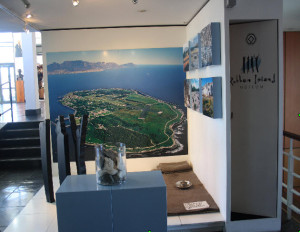 ult, I found myself revisiting the place where “the bad people” were kept, only now I realized that some were not so bad after all.
ult, I found myself revisiting the place where “the bad people” were kept, only now I realized that some were not so bad after all.
I bought a ticket for the tour some days before the trip, (advisable, as they fill up quickly) and took time out to examine the display at the Nelson Mandela Gateway at the V&A Waterfront in Cape Town.
There were many photographs of the political dissidents, the calls for boycotts, the anti-apartheid marches and there was also a prison cell that had been reconstructed for the purposes of the exhibit. I strongly recommend a visit to this exhibit before going to the island as it helps to contextualize the experience.
The trip began, as in times of old, with a boat ride from Cape Town docks, but this time instead of my uncle meeting us, we had a pleasant tour guide who told us jokes on our bus trip, whilst pointing out various sights on the island. Our bus was parked under a sign that said: “Welcome. We serve with pride.” I wondered if that sign had been there when Robben Island had been a prison as it was so sharply incongruous to the environment. I hoped not.
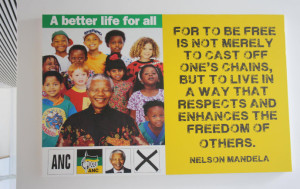 Robben Island has had a long history. First as a lighthouse to warn ships of the VOC, the Dutch East India Company (Verenigde Oostindische Compagnie), of the rocks that surround the island. But since the end of the 17th century, Robben Island has been used for the isolation of (mainly) political prisoners. The island was also used at various times as an animal quarantine station, a home for slaves, a leper colony, a hospital for the mentally ill and as a prison for French Vichy prisoners of war.
Robben Island has had a long history. First as a lighthouse to warn ships of the VOC, the Dutch East India Company (Verenigde Oostindische Compagnie), of the rocks that surround the island. But since the end of the 17th century, Robben Island has been used for the isolation of (mainly) political prisoners. The island was also used at various times as an animal quarantine station, a home for slaves, a leper colony, a hospital for the mentally ill and as a prison for French Vichy prisoners of war.
First we saw the Leper Graveyard and then house where Robert Sobukwe (Founder of the Pan Africanist Congress) had been kept separate from the other political dissidents.
It seems that Robert Sobukwe had special status in the prison. He was kept in solitary confinement at all times, but allowed certain privileges including access to books, being permitted to study, being permitted to wear civilian clothes, and being permitted bread. His children were allowed to visit him and they had their own bedroom in his “house”. Robert Sobukwe was convicted of incitement for demonstrating against and defying the Pass Laws, and in particular, for his connection to the PAC demonstration (although he was not present) which became known as the Sharpeville Massacre.
The notorious Pass Laws required black people to carry a pass book at all times when outside their compounds or designated areas, and were designed to limit severely the movements of the non-white population. This legislation was one of the dominant features of the country’s apartheid system.
Sobukwe was sentenced to three years in prison. After serving his sentence, he was moved to Robben Island for internment, as a new law called the General Law Amendment Act had been passed, which permitted his imprisonment to be renewed annually at the discretion of the Minister of Justice. This procedure became known as the “Sobukwe clause” and Robert Sobukwe was the only person whose imprisonment was extended under this clause. Imagine how special one has to be in order for parliament to pass a law just for you!
We also learned from our tour guide that the American politician and Pastor, Andrew Young, had fostered Sobukwe’s children in the USA, while Sobukwe had been in prison.
Our tour continued to the lime quarry where the political prisoners had worked. At the entrance to the quarry we saw a small cairn, and learned its history. In February 1995, (the landmark change of government was in 1994), about one thousand former political prisoners gathered again on Robben Island, but this time as free men, and to mark the occasion, each one placed a small stone from the quarry in a pile, making a small memorial to their years of hardship and struggle.
As we continued on our bus ride, we were shown a church, a hospital, a school and a mosque, and realized that far beyond our expectations, the island had supported a whole community. We duly arrived at the prison and tumbled out of the bus for our tour of “the real thing”. We were excited and filled with high spirits and I wondered for a moment where my heart would have been had I not been a tourist.
Inside we found grey walls. It was cool at midday; it was clear that at midnight it would be very cold. The communal cells were large and each had a bathroom attached.
Here we met our prison tour guide, Derrick Basson, a former political prisoner who served time on Robben Island for sabotage.
Derrick was very patient, humble and remarkably, not bitter. He answered all the insensitive questions calmly and without anger. In addition he explained the grading of the prisoners by race and also the diets that varied due to the racial classification of each prisoner. One of the curious facts he told us was that black prisoners were not given bread. As they were Africans their “natural” food was considered to be maize meal. The mixed race prisoners were allowed bread as they were considered to be more western or European and less African. The black Africans were also not allowed jam or syrup. I suppose you do not need jam if you have no bread.
Then I remembered that Robert Sobukwe, in spite of being black, was allowed to have bread, and it struck me that this must have been because he had been a university professor, and since this is a very “European” and non-tribal job, maybe he was considered eligible to receive bread.
Derrick further explained how prisoners slept on mats on the floor and how 5 blankets had not been enough to keep them warm at night. I suddenly remembered an interview with a former Alcatraz inmate who spoke of the extreme cold and of how prisoners had learned to sleep with only their elbows and knees touching the floor, hands locked behind the head. I became very grateful for my duvet.
We were told that in the beginning the political prisoners had been kept with the ordinary criminals, but later on, they were, thankfully, given their own “wing” and kept together. They came to call this place “The University” as they learned many things from each other and many of them also obtained degrees while in prison.
Derrick then took us to a yard where the prisoners had chopped rocks and turned them into stones, day after day in the sun. They were told that these rocks were used for roads built on the island, but no one seemed to know if this was true or not.
We were then taken to Nelson Mandela’s cell. Mandela was a militant anti-apartheid activist, as well as the co-founder and leader of the armed wing of the African National Congress (ANC), Umkhonto we Sizwe or “Spear of the Nation”. He was arrested in 1962 and convicted of sabotage, (amongst other charges), after he admitted to manufacturing explosives and acts of public violence, and was sentenced to life imprisonment. Mandela served 27 years in prison, 18 of these on Robben Island. After his release, he served as President of South Africa from 1994 to 1999.
My very first impression was of how small the cell was. No, not small, tiny. And then I thought that at least he could stand up and lie down in it, but not much more than that. At least it was larger than the dreadful box that I had heard was used in China. But there was no toilet. Just a metal bucket with a lid. At least a lid. And no tap, so no water. And if you are thirsty during the night, what should you do? And of course there was no electrical socket and no radio nor TV. And all I could think of was 27 years. TWENTY SEVEN YEARS! There was no door handle on the inside. The door was only operational from the outside, not unlike a cage. I remembered that Nelson Mandela had once remarked that the hardest and most traumatic experience he endured whilst on Robben Island for all those years was that he never ever saw, or even heard, a child. Can you imagine that? Now he insists on being photographed with children, whenever possible.
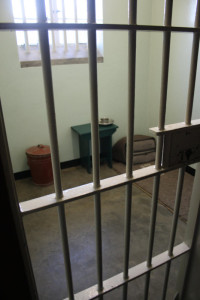 And then it was all over. We walked out to the yard, Derrick took us to the exit, and we said our goodbyes.I felt an odd mixture of elation and depression. Very happy that I had been to a UNESCO World Heritage Site of such importance, happier still that it was no longer a prison, and most happy that I was leaving. Yet also depressed and ashamed because of the suffering this place represented.
And then it was all over. We walked out to the yard, Derrick took us to the exit, and we said our goodbyes.I felt an odd mixture of elation and depression. Very happy that I had been to a UNESCO World Heritage Site of such importance, happier still that it was no longer a prison, and most happy that I was leaving. Yet also depressed and ashamed because of the suffering this place represented.
Duly subdued, we gratefully returned to our boat to ponder our feelings of inspiration and shock, enjoy the beautiful sunset cruise back to Cape Town, and watch a school of dolphins at play in the sea.
Remember when planning a visit to Robben Island, that the tours don’t always run on time. There was no snack bar on the boat. Our boat was 1 hour late in leaving Cape Town harbour and then we were rushed through our tour, which was a pity as there was too little time for questions.
A suggestion would be to make no appointments after the visit as the timing can vary, and also, take a snack pack. A sun hat and sun block are also good ideas.
Ferries depart (supposedly) at 9am, 11am, 1pm and 3pm, weather permitting, from Nelson Mandela Gateway, at the V&A Waterfront in Cape Town. Tickets costs are R230 for adults and R120 for children (U/18). Telephone: +27 (0)21 413 4200
Fax: +27 (0)21 419 1057
US, VA – “12 Years a Slave” movie: Museum
VA Exit 177B: The movie, “12 Years a Slave” has a connection to a slave site, now a Virginia museum, called Freedom House Museum. In 1808, a US law outlawed the importation of slaves. Still so necessary for plantation life, clever entrepreneurs did not let this stop the sale of slaves – they simply bred them! The slaves were encouraged to have as many children as possible so they could be auctioned off.
The last slave trader at this site, James H. Birch, was the same dealer who, in the movie, paid kidnappers $250 for Solomon Northup of Saratoga Springs, NY; They then sold him into slavery in Louisiana. “What is unique about this building is it’s one of the few remaining buildings that the slave trade actually took place in.” said curator Julian Kiganda” who designed the exhibits here.
This building was once headquarters for the Franklin and Armfield Slave Pen, the largest and most successful domestic slave trading firm in America. “We will give Cash for one hundred likely YOUNG NEGROES”, read one of their ads in the Alexandria Gazette in 1828. “Persons who wish to sell, would do well to give us a call, as the negroes are wanted immediately. We will give more than any other purchasers that are in the market or may hereafter come into the market.”
Between the 1830’s and 1860’s Virginia exported more than 10,000 slaves a year to the Deep South, and the total may have reached 300,000, tearing families apart forever. The FREE museum is a must to absorb the personal stories of this black mark on the country’s history. “Everyone who comes through there, they feel moved.” says Kiganda.
Location: . 1315 Duke St., Alexandria, VA
Tel: 703-836-2858
www.freedomhousemuseum.org
